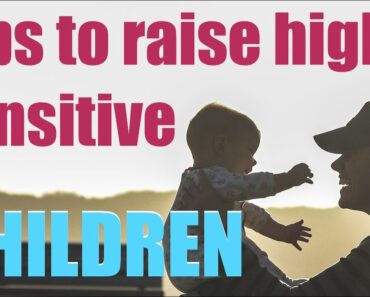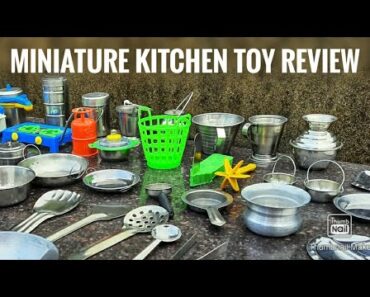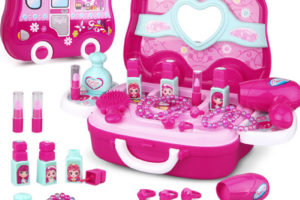Kids need certain nutrients to grow and develop, and it can be pretty stressful for parents to watch their kids eat and wonder if they’re getting enough of what they need. Many parents turn to multivitamins for kids as a little “insurance policy” to make sure they’re getting enough of the right nutrients—but is that a good idea? Here’s what you need to know.
Do kids need multivitamins?
If your child eats a relatively well-balanced diet and is otherwise healthy, Joseph Wiley, interim Chief of Paediatrics at Markham Stouffville Hospital, says they likely don’t need extra vitamin or multivitamin supplementation beyond vitamin D. “I don’t know that there is evidence to say there’s much to be gained by providing supplementation outside of a broad-based diet,” he says.
That being said, vitamin D supplementation is important because it can be difficult to get enough of the nutrient through diet and sun exposure alone. Even if you’re eating and drinking fortified foods like cow’s milk, or other natural sources of vitamin D like fatty fish and egg yolks, it’s still tough to get enough vitamin D, according to Andrea Carpenter, registered dietitian and founder of Toronto-based NutriKidz. The same goes for getting vitamin D through the sun. In Canada, we’re usually blocking vitamin D from the sun by either bundling up during the winter months or applying sunscreen during the summer months. Not to mention Canada’s low UV levels in the fall and winter months, which is about half the year.
How much vitamin D does my kid need?
Health Canada recommends a daily dietary allowance (RDA) of 600 IU (international units) for kids and adults aged 1 to 70. Babies under a year need a little less at 400 IU a day.
For kids over age 1, Lyndsay Hall, registered dietitian at JM Nutrition based in Toronto, recommends providing about 200 IU to kids through food and the rest through supplementation. One cup of orange juice with added vitamin D can provide about 100 IU of vitamin D, and a cup of cow’s milk contains 100 IU of vitamin D as well, so it can be pretty easy to meet the 200 IU benchmark for kids via diet.
To get children the remaining 400 IU via supplementation, Hall says vitamin D drops are her preference because they’re easy for parents to give and kids to take. “Kids can have issues swallowing capsules and tablets,” says Hall, noting that chewables or gummies often have added sugars which aren’t great for oral health. She’s also wary of kids associating sweet gummy vitamins with candy, which can be dangerous if a toddler accidentally gets a hold of the bottle unattended. Any option works at the end of the day, as long as the vitamin provides the daily recommended dose.
Breastfed babies under one need a vitamin D supplement of 400 IU via drops as breastmilk alone does not provide enough vitamin D for infants. Babies on formula don’t typically need a supplement as the Canadian Pediatric Society (CPS) says formulas fortified with 400 IU of vitamin D per litre should be enough to meet a baby’s needs.
These kids DO need multivitamin or single-nutrient vitamin supplementation
When it comes to kids with certain medical diagnoses that puts them at a higher risk of malabsorption, vitamin or multivitamin supplementation may be necessary to avoid vitamin deficiencies and conditions like scurvy. Wiley says kids with cystic fibrosis, for example, have difficulty obtaining enough nutrients from their diet and their doctor may recommend extra vitamin supplementation. This is also true of children who have restricted diets for sensory reasons, for example, those with autism spectrum disorder.
Supplementing with a single nutrient, rather than a multivitamin, may also be necessary for kids on vegan or vegetarian diets—vegans more so than vegetarians as they have fewer options to obtain essential nutrients from food alone. Hall says she may recommend vitamin B12 for kids following vegan diets because they are at a greater risk of developing a deficiency in the nutrient since it’s mainly present in animal products that vegans can’t eat like meats, milks and cheeses. But this supplementation of vitamin B12 typically depends on the child’s food preferences as Hall explains that some kids may be getting enough through their diet when, say, consuming fortified nutritional yeast.
What about picky eaters?
As tempting as it is to throw in the towel and let your fussy-eating kid go wild on chicken strips and then just supplement with vitamins or multivitamins, it’s generally best to work on broadening your kid’s diet first before resorting to supplementation, says Wiley. Even if they are eating small amounts of food from each of the main food groups, Hall says they’re more often than not getting what they need.
This “food-first” approach is useful because it helps kids (and parents!) learn to persevere through periods of food pickiness. If parents are constantly relying on a vitamin to round out a picky-eating child’s diet, it may make the child even more resistant to certain foods because they know there is a back-up plan.
Hall says it’s perfectly normal for kids to go through periods of refusing certain foods or food types, and parents can help their kids overcome these temporary aversions in a few ways. She suggests offering the disliked food alongside something parents know their kids love and especially at times where their kid is hungriest.
The most important thing to remember? Persistence. “Sometimes it can take up to fifteen tries for a child to actually decide whether they like a food or not,” says Hall, so don’t give up after the first or second attempt.
That being said, Carpenter says cases of extreme pickiness where kids are missing entire food groups may warrant short-term supplementation until she and the family are able to successfully integrate that food group and/or nutritional gap into the kid’s regular diet. For example, a child significantly averse to eating meat may be missing key nutrients like vitamin B12, zinc or iron. A child following a strict vegan or vegetarian diet may also be deficient in these nutrients if they’re not getting them from natural or fortified food sources. Working with a paediatrician or nutritionist to determine appropriate supplementation types and doses can help a child obtain these essential vitamins temporarily until they are able to gain them via diet alone.
But before jumping to supplement, it can be useful to review your child’s eating habits over the course of a few days to a week to try and accurately judge if there really are any gaps or deficiencies. Carpenter says this week-long approach is preferred because although kids may not get all the nutrients they need in one day or meal, they may still be getting adequate levels over the course of a few days. If your kid is super into fruits and veggies one day and the next turns to grains and proteins, Carpenter says they’re likely getting what they need.
So it’s important to understand what kinds of nutrients your child is gaining from food before resorting to a supplement to avoid giving them more nutrients than they may need. If you aren’t sure, speak to a paediatrician or registered dietitian to help you understand if vitamins might be helpful to your child.
My kid’s diet is pretty well-balanced but I want to supplement with a multivitamin anyways—is this OK?
Wiley says although giving a multivitamin is not something he recommends, it’s also not something he dissuades parents from. “It’s common behaviour,” he says, adding that if parents want to offer a multivitamin supplement to their otherwise healthy child and aren’t concerned that it’s putting their child at any increased risk of vitamin toxicity or overdose, it’s really their choice. “It just may not be a necessary addition to their [child’s] diet,” Wiley says. Ultimately, nutrient levels in many multivitamin products are pretty low (but still enough to have an effect on a child’s nutrient levels and stores), says Hall, so generally speaking giving your kid a multivitamin coupled with a relatively healthy diet is pretty low risk as long as they do not exceed the tolerable upper intake level (UL) for any of the vitamins or minerals they contain. It is never a bad idea to run supplements by your kid’s doctor first to make sure of this.
Should I boost my kid with vitamins when they’re getting sick?
According to Carpenter, there really is no quick fix when it comes to preventing colds and common illnesses, so loading your kid up on vitamin C at the first sign of the sniffles isn’t the best solution. “It doesn’t really work like that,” she says.
Instead, Carpenter says your best bet is again to focus on diet and offering kids a variety of fruits, vegetables, whole grains, healthy fats and proteins to keep their young bodies healthy and strong. Vitamin C is surprisingly present in many different foods, says Hall, including citrus fruits, bell peppers and tomatoes, so it can be relatively easy for kids to meet their daily vitamin C needs via diet alone.
What risks do vitamins and supplements pose to kids?
It’s always possible to have too much of a good thing. Every nutrient has what’s called a tolerable upper intake level (UL), which is the maximum amount of a nutrient a person can take through food and supplements without risking adverse effects on their health. Each nutrient or vitamin has a different UL, and that amount also fluctuates depending on age and sometimes gender. The UL for vitamin D, for example, is 2500 IU for kids aged 1 to 3, 3000 IU for kids aged 4 to 8 and 4000 for kids 9 and up.
Considering the recommended daily dose of vitamin D for kids is only 600 IU, it may seem unlikely that you’ll reach toxic levels, but it can happen, especially in situations where your child is actually eating a balanced diet and then consuming high-levels of supplements on top of it. The same goes for children consuming both a multivitamin plus nutrient-specific vitamins, like vitamin C or D. So if you’re already giving your kid a vitamin D supplement, for example, it’s probably best to avoid a multivitamin with vitamin D as well.
Carpenter says overdoing it with certain types of vitamins or minerals may cause kids to feel symptoms like nausea, vomiting, stomach pain, constipation, diarrhea and/or headaches. This is especially true of vitamin D, which, when taken excessively, can also cause high calcium levels in our blood and then lead to calcium or kidney stones.
Iron is another supplement to be careful of when it comes to toxicity, especially with regard to kids, says Hall. Health Canada’s recommended dietary allowance for kids aged 1 to 3 is 7 mg per day, and 10 for those aged 4 to 8. If consumed in levels exceeding the UL of 40 mg per day, results could be organ failure or even death. However, Wiley says children’s vitamins don’t generally contain iron, and if they do, it’s usually in very small amounts.
To limit toxicity risks, it’s always safest to check in with a doctor or nutritionist to establish both if your kid actually needs vitamins and if so, what kinds and which doses. But if you do choose to supplement on your own, be wary of nutrient levels in both multivitamin and single-nutrient products and make sure you’re staying within the recommended allowances and aren’t nearing those ULs.
Fish Oil, DHA and Probiotic supplements
Fish oil is known to contain high levels of omega-3 fatty acids like docosahexaenoic acid (DHA), which research shows can help promote things like cognitive health and brain function in adults and kids. But are these supplements actually useful and should your kids be taking them? Wiley says he doesn’t usually recommend fish oil/DHA to his patients because it’s tough to say whether the supplements are actually helpful due to a lack of robust research. Hall agrees, saying the research is both too new and too varied to recommend the supplements to her clients as well.
According to the National Institutes of Health (NIH) in the U.S., there currently isn’t enough information to establish a recommended dietary allowance or UL per day for specific omega-3s like DHA for kids aged 1 and up. It’s not listed on any of Health Canada dietary reference intakes tables, either. However, if DHA is consumed in high levels such as doses of 2 to 15 grams per day, the National Academy of Medicine in the U.S. (formerly the Institute of Medicine) has noted concerns surrounding immune function and bleeding.
So if you’re worried about the levels of DHA and omega-3 that your child is getting and don’t want to risk the consequences of overdoing it, Hall suggests increasing the amount of DHA and omega-3s your kid gets in their diet instead of doing it through supplements. Chia and flax seeds, walnuts, and of course different types of fish like salmon and mackerel are all great sources of omega-3 fatty acids.
It’s a similar situation with probiotics—research in this area is still developing, says Wiley. He does note some limited studies show probiotics can be beneficial for things like helping resolve diarrhea or stomach pain, but says the results aren’t definitive and the studies are still new and evolving. As a result, he says probiotics are not something he actively recommends to families, but that giving kids probiotics can be a safe and reasonable option for parents.
It’s also important to keep in mind that it may not be necessary to give your kid a probiotic supplement if they’re already getting it in food products like yogurt. Other natural sources of probiotics are fermented foods like sauerkraut, kimchi and kombucha, says Carpenter. There are several different strains of probiotics, she says, which adds to the difficulty of recommending this supplement to kids. Some can help with gut health and others to support a strong immune system, but ultimately there is a need for more evidence to be able to suggest which strain and in what amounts is safe and effective for kids.
What to look for when choosing a vitamin or multivitamin
Ultimately, the choice of supplementing your kids’ diets with vitamins or multivitamins is up to you, but it’s always best to seek out the expertise of a paediatrician, registered dietitian, or both, to make sure supplementation is really necessary and helpful to your child’s growth and development.
If you do choose to supplement, there are a few things to consider when choosing products for your child. First, you want to look for a product with a natural product number (NPN) on it. In Canada, this means the product has been examined by Health Canada and deemed “safe, effective and of high quality.” The next thing to consider is if the item has been third party tested, which means it has been assessed by an external organization to ensure that there aren’t any undeclared ingredients or contaminants within the supplement, and that the ingredient amounts listed on the bottle are accurate. You can look for a third-party tested logo, or visit the supplement website to confirm.
It’s also important to read the ingredients listed on the bottle. Carpenter suggests steering clear as much as possible of sugars and artificial dyes, which are usually found in the non-medicinal ingredients section of the label. Remember that vitamin types and levels will vary per each multivitamin product, so it’s important to choose one that aligns with your child’s specific needs.
Lastly, it’s important to understand your child’s ability when it comes to taking vitamins or supplements and making sure to choose a safe option. Can they handle a chewable tablet or gummy? Is a liquid or drop more suitable? Are they older and can actually swallow a capsule? Carpenter says gummy formats are OK, but advises they generally don’t have the ability to contain as many vitamins and minerals as chewable or swallowable tablets. Ultimately, her preference is to give kids the least amount of burden as possible, so this means as few vitamins as possible in the least amount of doses per day. This can ultimately help parents avoid overdoing it dosage-wise, and can assist in preventing missed doses.

































